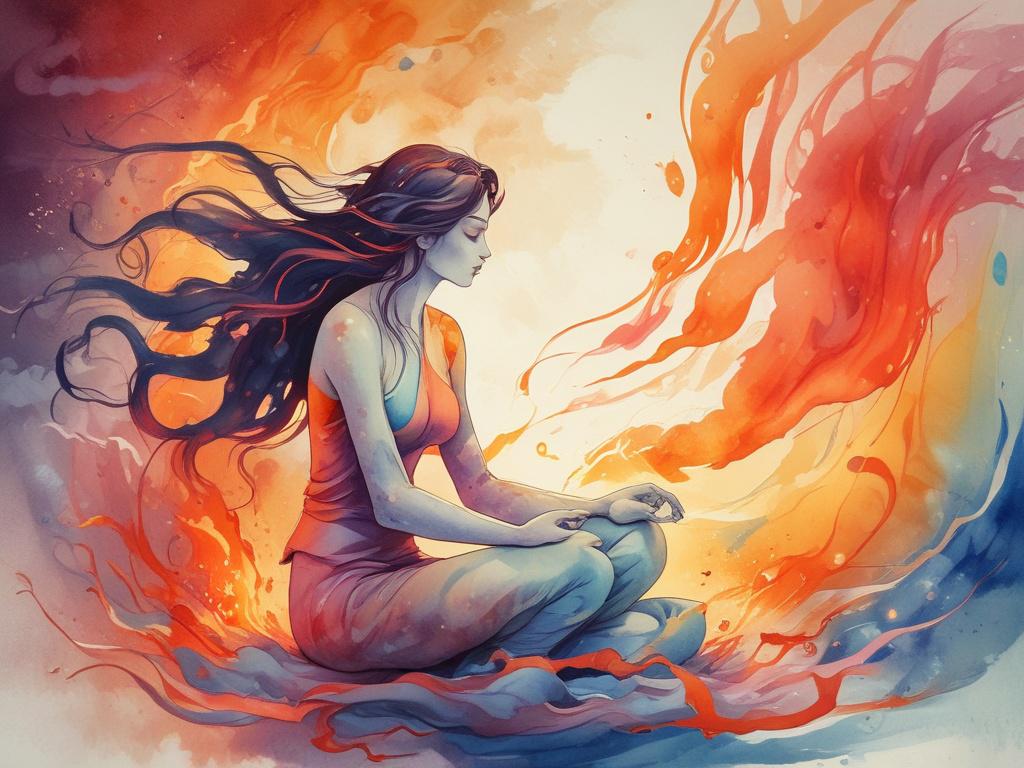
In today’s world, stoicism; the philosophy of mastering emotions through reason and detachment, often stands as the gold standard of resilience. Rooted in ancient Greek thought, stoicism teaches us to keep calm, endure hardship silently, and control the inner tempest through disciplined will. Marcus Aurelius advised, “You have power over your mind, not outside events. Realize this, and you will find strength.”
But what if there is another way? One that honors not just the mind’s mastery, but the sacred depths of feeling?
Across cultures and through generations, our ancestors have offered a profound counterpoint to stoicism’s emotional restraint; reminder that feeling deeply is a sacred, necessary, and healing act.
Emotional Expression as Sacred Ceremony
In many indigenous traditions, emotion is never something to be tamed or hidden. The Lakota Sioux, for example, hold the practice of “crying for the dead” as a communal ritual of release and remembrance. Tears are sacred, grief is a rite of passage, and mourning becomes a powerful thread weaving individuals into the collective fabric.
This is not weakness, but witnessing. It’s a way to honor the fullness of human experience and connect soul to soul.
The Body as Spirit’s Vessel
Ancestors from African and Native American cultures understood the body as a living vessel through which emotions flow and transform. The Yoruba concept of “ase” embodies life’s creative force, a power that pulses through feeling and spiritual vitality alike.
To hold back emotions is to block this sacred flow. Instead, ancestral wisdom invites us to dance with feeling, to move it through our bodies and into the world as renewal.
Vulnerability as Strength Through Storytelling
Storytelling has long been a sacred act; a way to share not just histories, but also the raw truths of pain, joy, and transformation. For many communities, to be vulnerable in story is to be brave.
Unlike stoicism’s quiet endurance, these stories carry the power to heal, unite, and hold space for all parts of the human spirit.
Resilience Rooted in Rhythm, Not Rigidity
Cycles and seasons are central to many ancestral teachings. The Celtic Wheel of the Year honors the dance between light and dark, growth and rest. This natural rhythm teaches that human emotions, like nature itself, move in waves.
Rather than resisting the tides within, ancestral wisdom shows us that true resilience is fluid, a sacred dance of feeling and letting go, not a stiff armor against life’s storms.
Remembering the Sacred Gift of Feeling
To move against stoicism is not to reject strength or discipline; it is to remember that feeling is a divine language of the soul. It is an invitation to live deeply attuned to your inner tides, honoring both your softness and your sovereignty.
This ancestral guidance calls you home:
To feel fully, to express openly, and to live devotedly; rooted not in resistance, but reverence.
May this ancestral whisper remind you:
You were made to feel deeply.
You were made to be whole.
You were made to come home to yourself.
